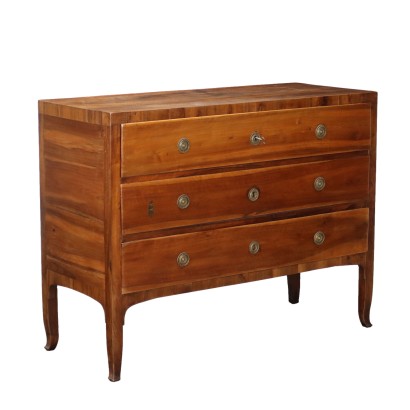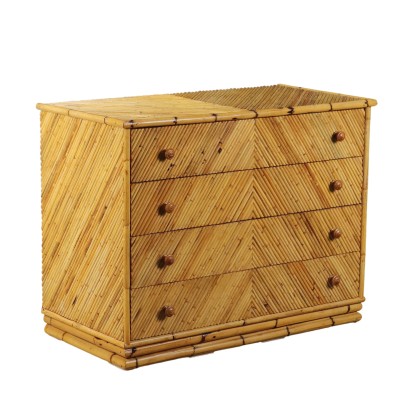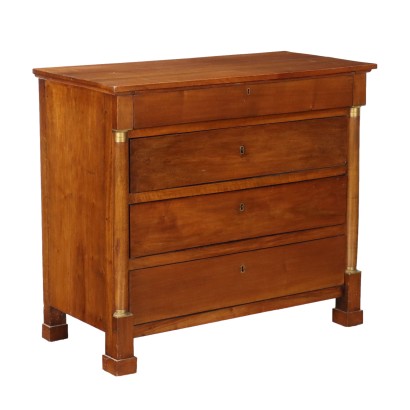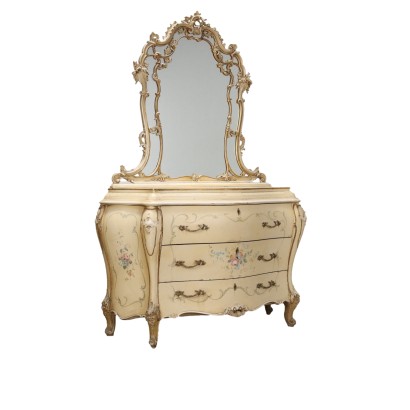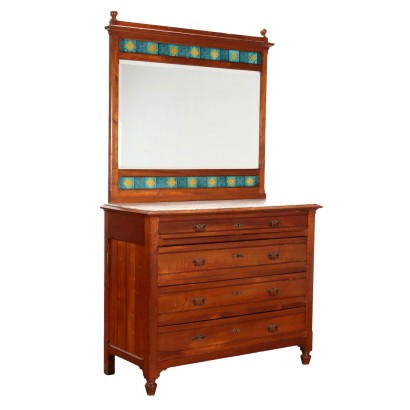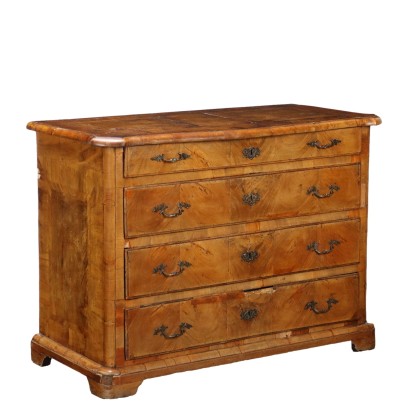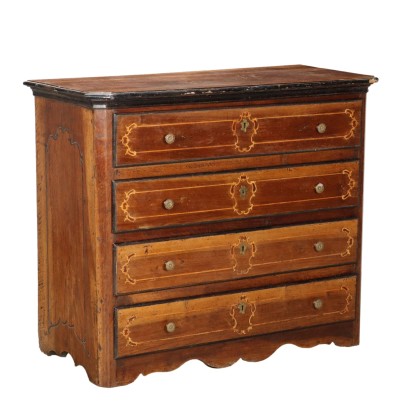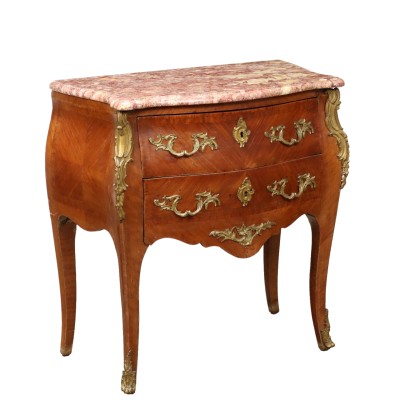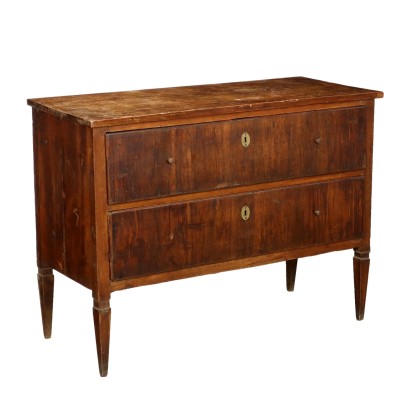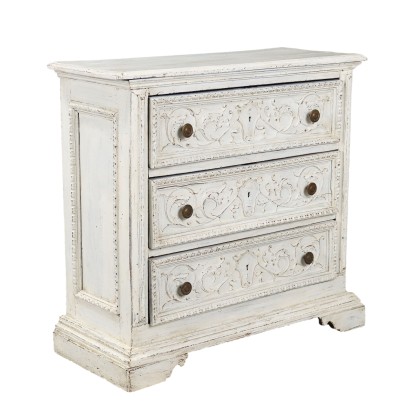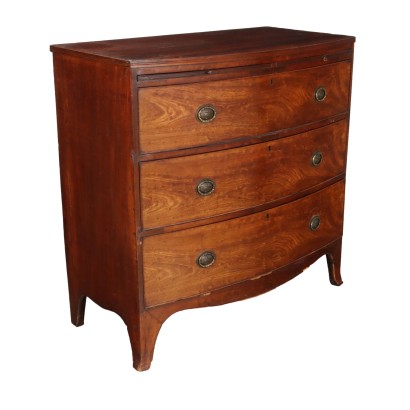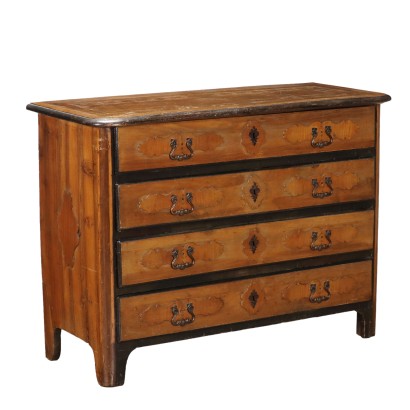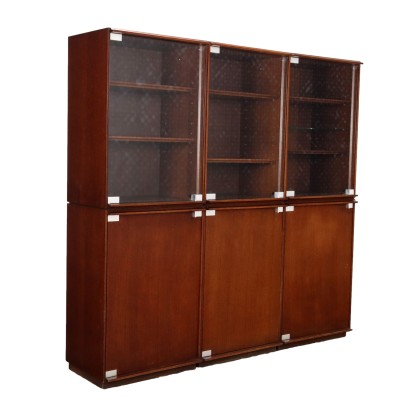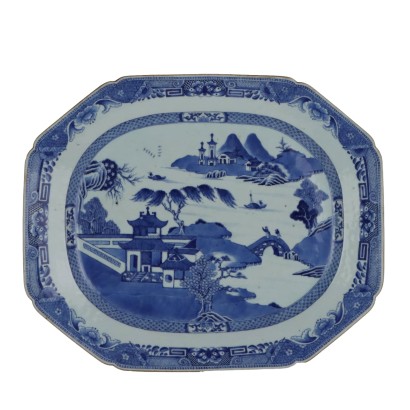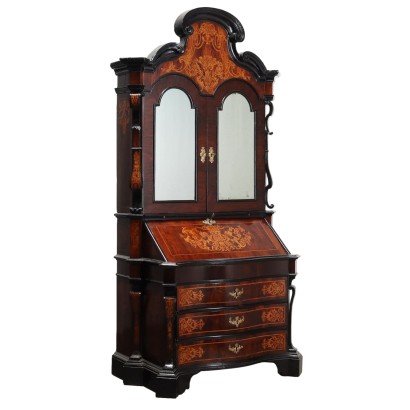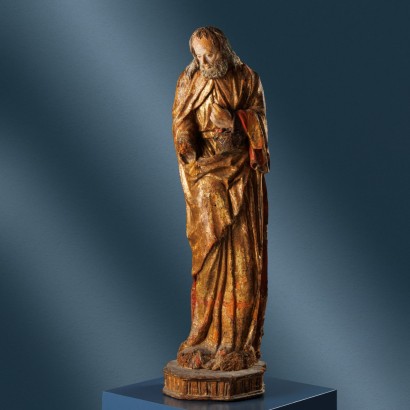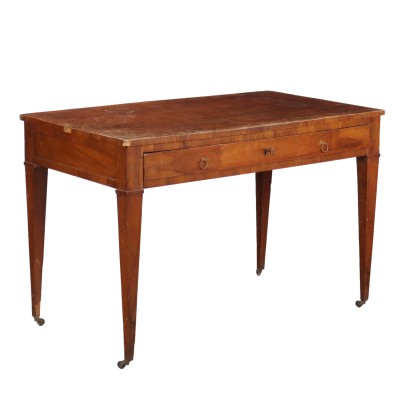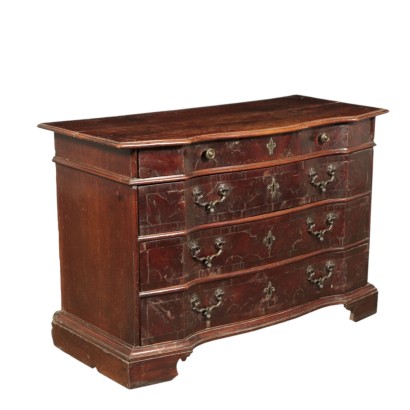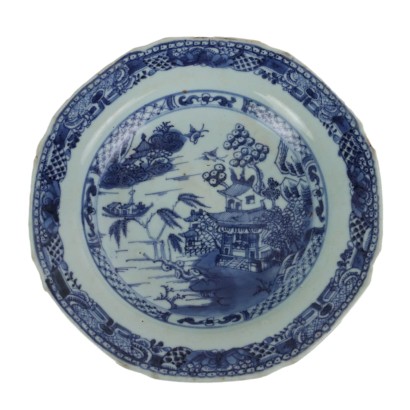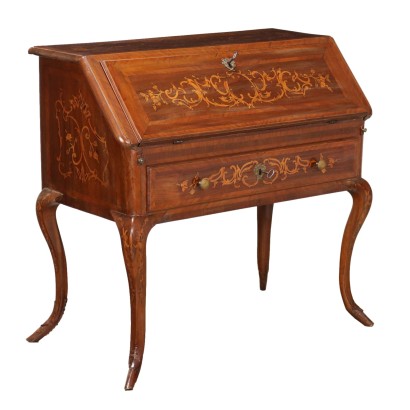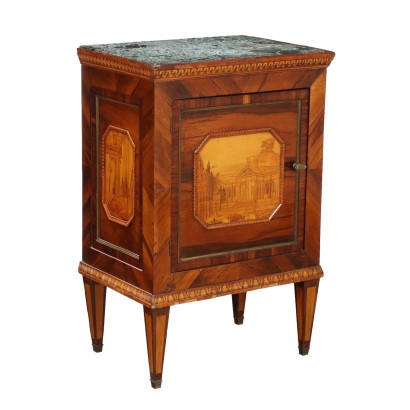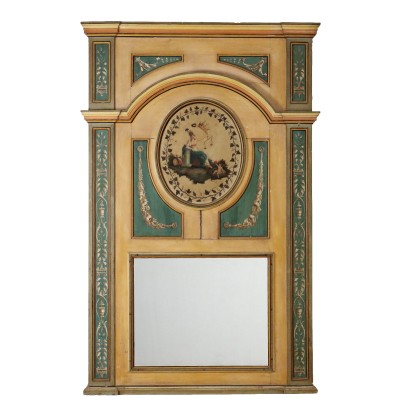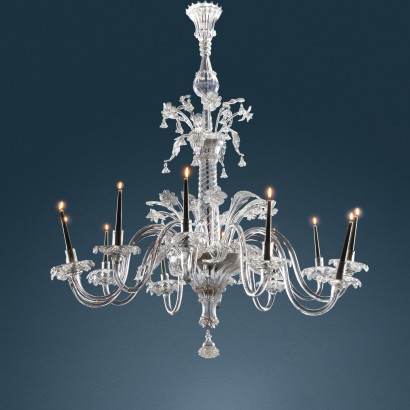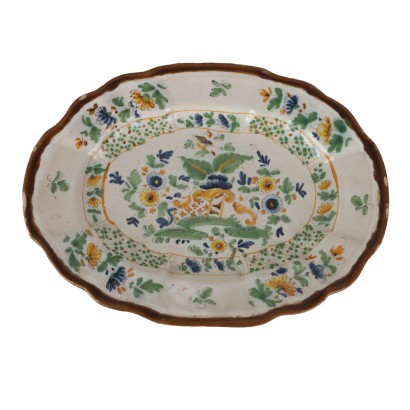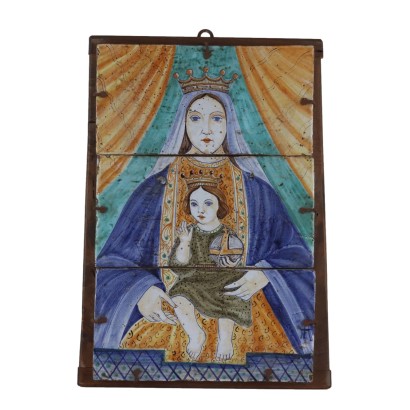Antique Chest of Drawers Louis XVI Walnut 3 Drawers XVIII Century - Veneto, Late XVII-Early XVIII Century
Features
Veneto, Late XVII-Early XVIII Century
Style: Louis XVI (1774-1792)
Age: 18th Century / 1701 - 1800
Origin: Veneto, Italy
Main essence: Walnut
Material: Walnut Slab
Description
Louis XVI chest of drawers in walnut and walnut veneer, interior in fir. Front with three drawers, sabre-shaped feet, handles and escutcheons replaced. Veneto, late 17th early 18th century.
Product Condition:
Product that due to age and wear requires restoration and polishing. We try to present the real condition of the furniture as completely as possible with the photos. If some details are not clear from the photos, what is reported in the description is valid.
Dimensions (cm):
Height: 108
Width: 140,5
Depth: 57
Additional Information
Style: Louis XVI (1774-1792)
The Louis XVI style precedes by many years the coming to the throne of the sovereign from which the name derives.The renewed prevalence of the composure of geometric shapes that characterize the furniture of the neoclassical era, is welcomed as an antidote to the freer and more capricious formulations imposed by the Rococo dictates.
The artist's imagination works free interpretations derived from examples of the Greek-Roman, Etruscan or Egyptian world, from which only the architectural metrics are re-proposed with strict observance.
In this sense, it should be noted that only starting from the 1970s and 1980s in cabinet making did we witness the sunset of the pictorial flowering in inlay, in favor of models with a prevalence of geometric ornamentation.
Therefore, furniture characterized by extreme elegance and virile austerity matures.
In Italy, the Louis XVI style finds natural diffusion.
The furniture tends in the norm since the Sixties-Seventies to adopt a linear structure with a strong presence of decorations.
The use of light brown-colored woods is preferred, such as cherry.
The Italian Louis XVI will always remain linked to the production of furnishing accessories specifically oriented to the inlay typology.
These are furniture of well-proportioned dimensions, supported by the characteristic truncated conical pyramid legs, dressed in the mirrors of the top, sides and panels centered by elegant geometric decorations.
Age: 18th Century / 1701 - 1800
18th Century / 1701 - 1800Main essence: Walnut
Walnut wood comes from the plant whose botanical name is juglans regia , probably originally from the East but very common in Europe. Light or dark brown in color, it is a hard wood with a beautiful grain, widely used in antique furniture. It was the main essence in Italy throughout the Renaissance and later had a good diffusion in Europe, especially in England, until the advent of mahogany. It was used for solid wood furniture and sometimes carvings and inlays, its only big limitation is that it suffers a lot from woodworm. In France it was widely used more than anything else in the provinces. In the second half of the eighteenth century its use decreased significantly because mahogany and other exotic woods were preferred.Material: Walnut Slab
Other customers have searched:
Approfondimenti
Scopri di più su cassettiere e comò grazie ai nostri approfondimenti:La storia nascosta in due antichi cassettoni
Conoscere il Neoclassicismo attraverso un cassettone piacentino
Un comò piemontese influenzato dal fascino per l'Oriente
Un signorile comò rococò napoletano
Una caratteristica cassettiera con alzata emiliana di perfetto gusto barocchetto
E per gli appassionati dal gusto più raffinato, c'è FineArt:
Commode a tre cassetti G.B.M., inizio XIX secolo
Canterano dipinto
Canterano emiliano, primo quarto XVIII
Cassettone a ribalta romano, secondo quarto XVIII secolo
Comò attribuito a Luigi Viglione, Luigi XVI, fine XVIII, Torino
Coppia di comò e comodino di Maggiolini
Sull'antiquariato in generale dai un'occhiata anche a
Classic Monday: da un pezzo dei nostri magazzini alla storia dell'antiquariato
L'antiquariato dalla A alla Z: il Dizionario dell'Antiquariato
Il dizionario dell'antiquariato - Lastronatura
Il dizionario dell'antiquariato - Mascherone
Il dizionario dell'antiquariato - Natura morta
Il dizionario dell'antiquariato - Opificio
Il dizionario dell'antiquariato - Pastiglia
Il dizionario dell'antiquariato - Savonarola
Il dizionario dell'antiquariato - Rosone
Product availability
The product can be seen at Cambiago
Immediate availability
Ready for delivery within 2 working days from ordering the product.

